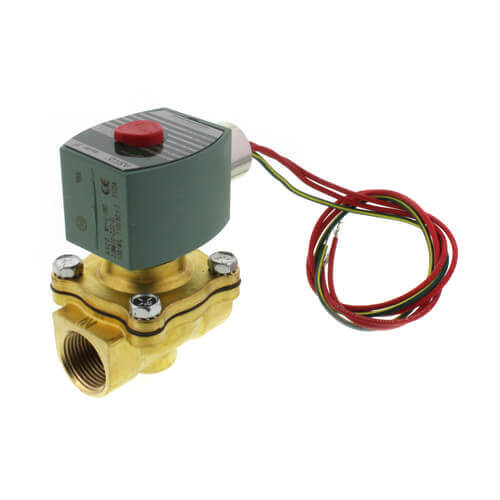The working principles of direct acting solenoids are simple. They don’t use a diaphragm because their seal is built into the moving core, and they’ll stay shut even if no pressure is applied. A pilot operated valve, on the other hand, requires some pressure to keep the valve closed.
When no current is applied to the coil in a normally closed direct acting solenoid valve, the closing spring presses the plunger against the valve seat, blocking the path to the outlet port. A starting force is generated by current flowing through the coil, which pulls the plunger and seal against the spring force and draws the medium upward. As a result, the medium can flow through the direct acting valve because the channel has been opened.

When no current is applied to the coil of a normally closed direct acting solenoid valve, the closing spring presses the plunger against the valve seat, blocking the path to the outlet port. A current creates a starting force that pulls the plunger and seals it against the spring force, causing the medium to rise. The medium can now flow through the direct acting solenoid valve because the channel has been opened.
For applications involving clean liquids, gases, and vapours, direct acting plunger valves are a cost-effective solution. Mildly acidic and alkaline solutions can also be used with specialized versions. This allows for a wide range of functions, such as shut-off, dosing, filling, and ventilation. Increased switching cycles and a longer service life are ensured by spring-damped seat seals.
These valves are typically used in low flow or high pressure applications and are smaller in size.
Shut-off valves with one inlet and one outlet port are known as direct-acting 2-way valves.
Direct-Acting Three ports and two internal orifices, one inside the valve body and one at the end of the armature tube, are found on 3-way valves. One seal is located at each end of the moving armature, and when one orifice is open, the other is closed. The armature moves and the position reverses when the solenoid coil is energized. The armature spring holds the lower armature seal tightly against the lower orifice and shuts off flow when the coil is de-energized.
Copyright © 2025 Butler & Land Technologies, LLC. All Rights Reserved.
Web Design by Red Spot Design. Return & Refund Policy, Terms & Conditions